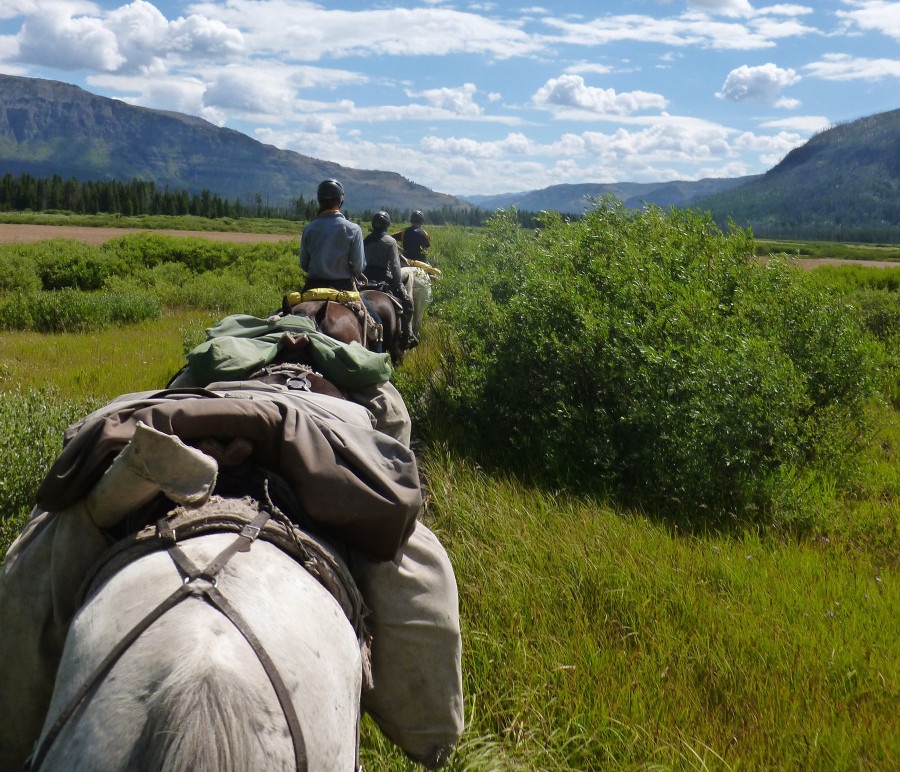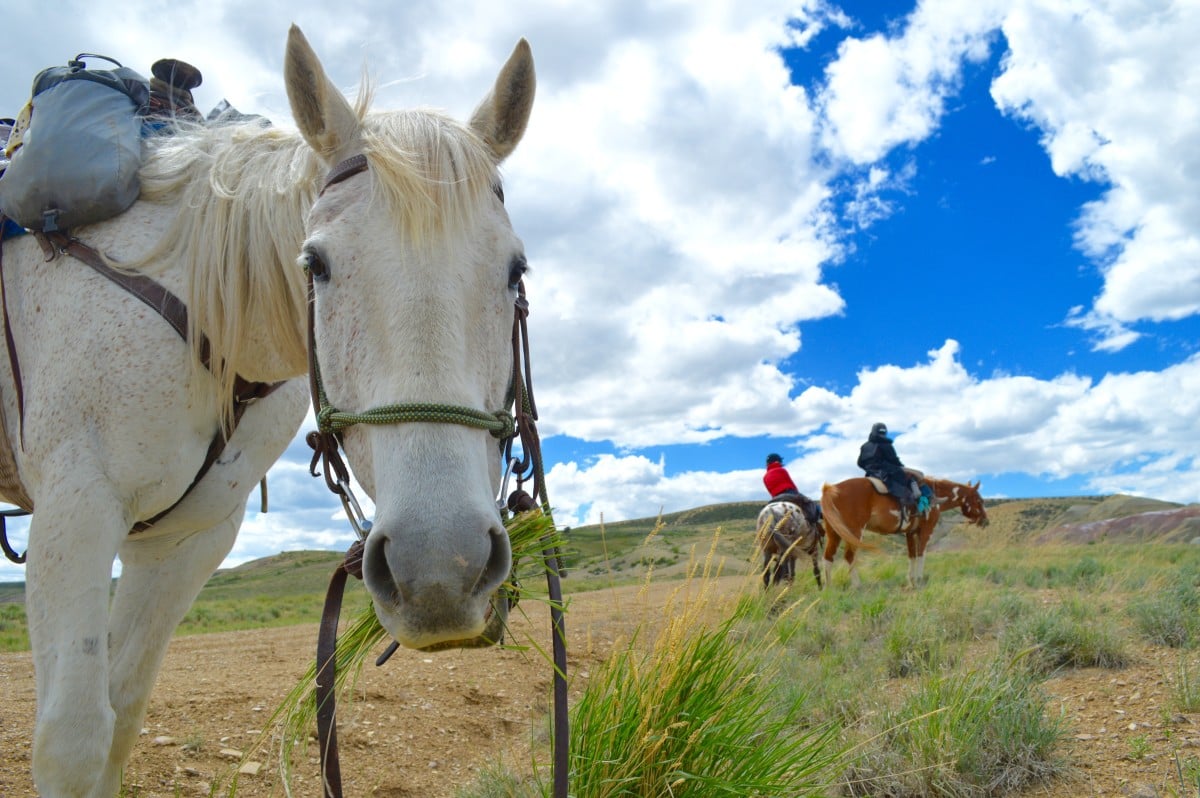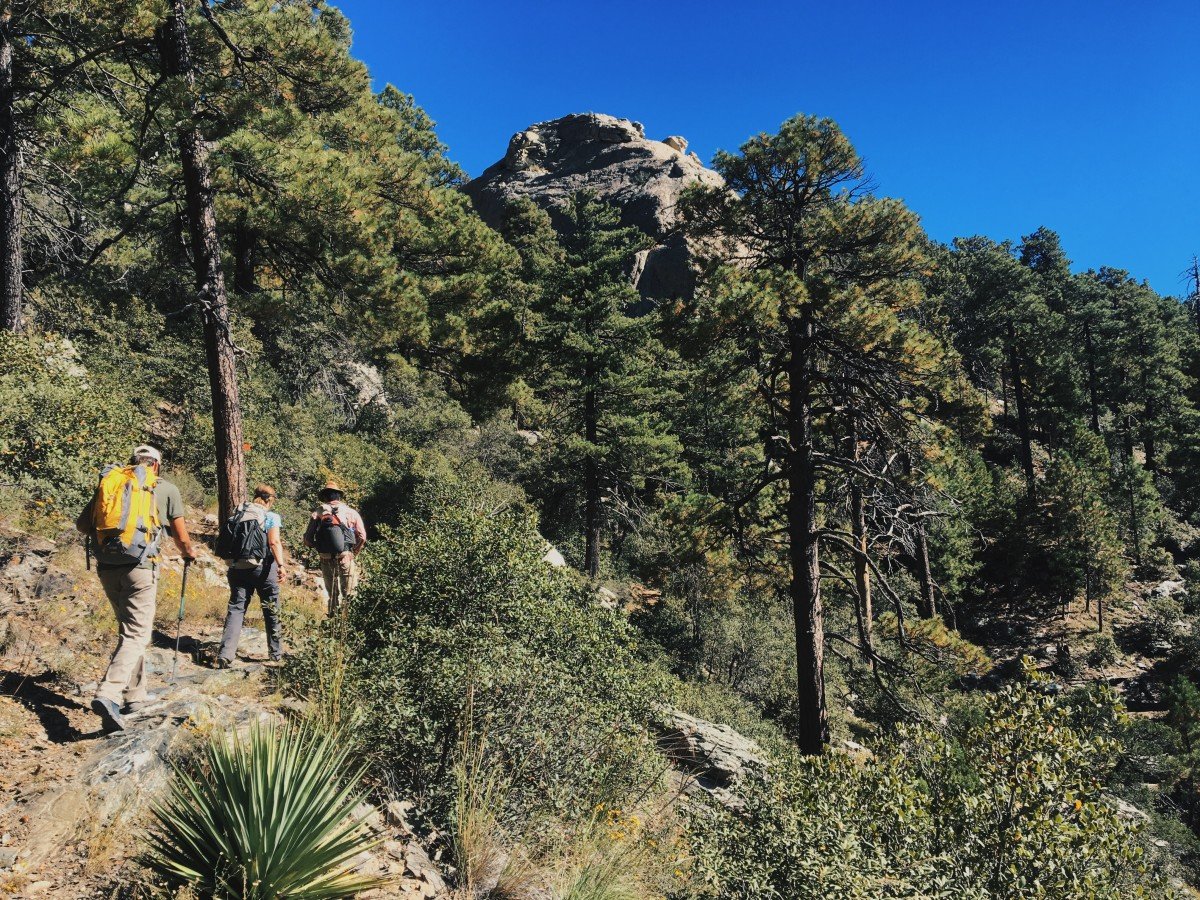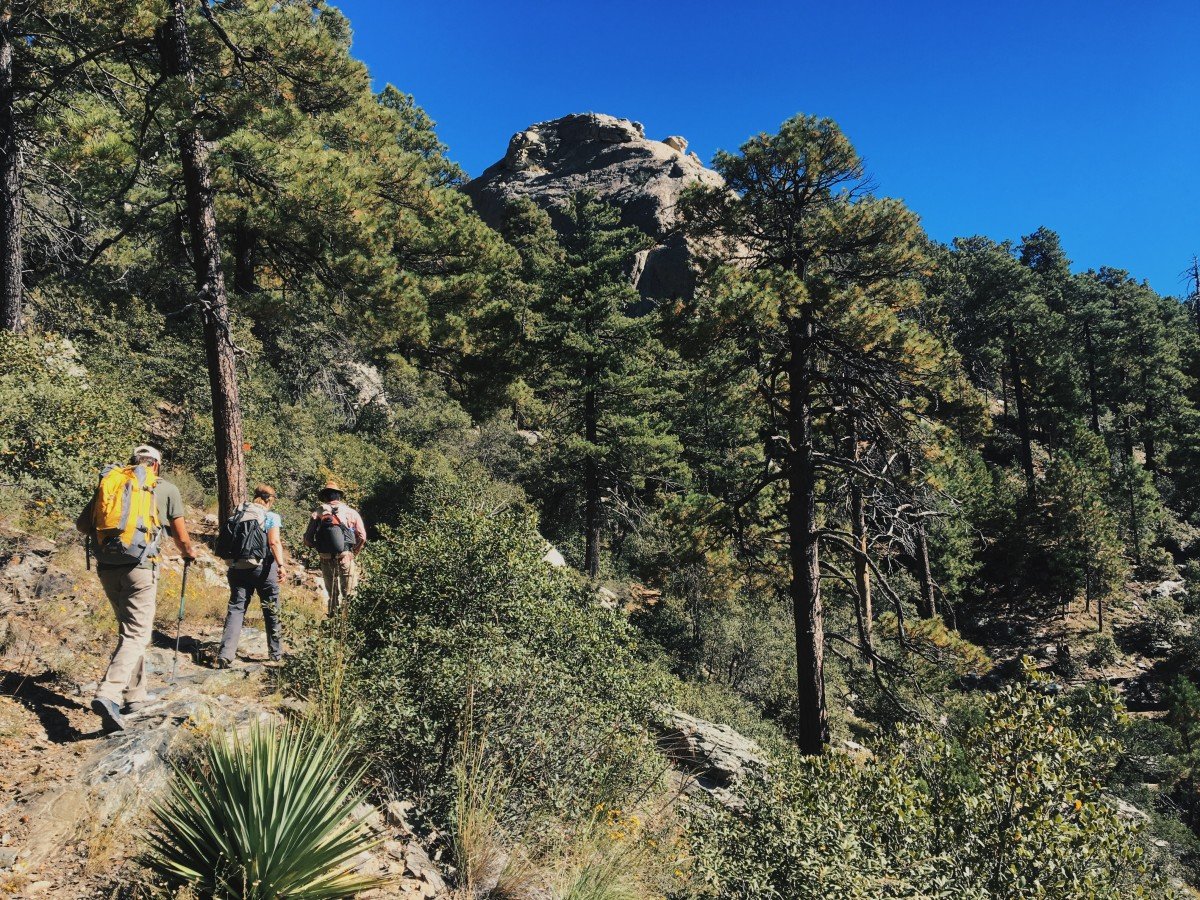
The Setting
You and your WFR trained co-instructor are leading a group of high school students into the mountains for a week-long backpack trip.
A half-mile from the road, you see a lone horse and rider come down the trail. Suddenly, the horse begins to rear and buck. The rider falls off the back of the horse and lands on his head and shoulder.
From your training, you start the scene size-up. The weather is warm and sunny. You tell your students to wait off on the side of the trail, dig your first aid kit out of your pack, and go to help the patient.
The scene is safe. The horse that bucked appears uninjured and is walking in the nearby meadow. You scan for whatever spooked the horse, perhaps a snake or other animal, but none are obvious. There is one patient. He is on his back. He doesn’t look badly hurt although he appears to be unresponsive. You and your co-instructor put on your gloves and mask. You tell your co-instructor to control the head and you begin your assessment.
Your patient doesn’t respond to “Hi, I’m a Wilderness First Responder, can I help?” You assume consent and conduct an initial assessment.
The patient’s airway appears clear and he is breathing without distress. There is no obvious bleeding and he has a strong radial pulse. You protect the spine because of the mechanism of injury (MOI)—falling on his shoulder and head. During the COVID pandemic, you may drape a mask lightly over the patient’s nose and mouth. There are no obvious injuries to expose and investigate and the environment is benign, so you elect not to move the patient and proceed with the head-to-toe exam.
SOAP Report
Subjective
The patient is a 45-year-old male who fell off the back of a horse and landed on his head and left shoulder. He was not trampled by the horse. Initially unresponsive for a few minutes, he is now awake and alert.
Patient slid off the back of the horse while the horse was rearing. He did not appear to be trampled by the horse. The patient’s chief complaint is a dull headache he rates as a 4 on a scale of 1-10.
Objective
Patient Exam
The patient was found lying on his back on the trail. The patient was initially not awake, but moaned to verbal stimulus. Within one to two minutes he became A+Ox4.
The patient has a golf ball sized bruise/swelling on the back of his head and a 3” bruise on his left shoulder. The patient is moving his arms and legs, denies pain on palpation of the spine and has good circulation, sensation and motion (CSM) in all 4 extremities. No other injuries found
Vital Signs
| Time | 10:15 a.m. | 10:45 a.m. |
| Level of responsiveness | Responsive to verbal stimulus | A+Ox4 |
| Heart rate | 84, strong, regular | 72 strong, regular |
| Respiratory rate | 12, regular, easy | 12, regular, easy |
| Skin color, temp, moisture | Pink mucous membranes, skin warm, dry | Pink mucous membranes, skin warm, dry |
| Blood pressure | strong radial pulse | strong radial pulse |
| Pupils | PERRL | PERRL |
| Temperature | Not taken | Not taken |
History
|
Symptoms: |
Patient states he has a headache and is slightly nauseous |
|
Allergies: |
Patient is allergic to peanuts with no recent exposure. |
|
Medications: |
Patient takes a medication for high blood pressure and another for cholesterol. He took his normal doses today. |
|
Pertinent Hx: |
High blood pressure and cholesterol No other medical history. |
|
Last in/out: |
Patient reports he drank a liter of water this morning, ate breakfast and had a normal bowel movement. He vomited once shortly after the accident. |
|
Events: |
None other than falling from the horse. |
Stop Reading!
What is your assessment and plan? Take a few minutes to figure out your own assessment and make a plan. Don’t cheat—no reading on without answering this first!

Assessment
- Patient has a mechanism for a spine injury.
- Possible closed head injury.
- Bruised and abraded left shoulder.
Plan
- We will protect the spine and monitor the patient for a developing head injury.
- Local EMS/SAR will be contacted and we will await their arrival and support their evacuation.
- We have log rolled the patient onto a foam pad and are using manual stabilization, a cervical collar improvised from a pile sweater and head blocks from clothing-filled stuff sacks to protect the spine.
- We are monitoring for signs of hypothermia, vomiting, change in mental status, and bodily function needs.
Anticipated Problems
- Patient may develop signs of increasing intracranial pressure and need a rapid evacuation.
Comments: Possible Spine Injury and Wilderness Protocols
The focused spine assessment (also known as a spine clearing protocol) is commonly taught as a wilderness protocol. When is it appropriate to use the focused spine assessment in an urban context, or on the local ski hill?
These leaders had wilderness medical training and considered using their focused spine assessment protocol to make a decision on the need for spine protection. The patient was A+OX4, sober, without distractions, denied spine pain or tenderness and had good CSMs in all four extremities. In a wilderness context he would be a candidate for the focused spine assessment. However, due to proximity to the road, these leaders decided instead to engage the local emergency medical or search and rescue system in the evacuation. The leaders had a protocol from their medical advisor for their wilderness program that supported the use of a focused spine assessment, but it was not intended to extend to supersede local emergency services or be used in a non-wilderness context.
Our advice to our WFA, WFR and WEMT students is that in non-wilderness situations we should support the practices of the local EMS system, rescue group, or ski patrol. Use your wilderness medicine skills to immobilize the patient with an MOI for a spine injury and then access the local EMS/SAR system. When EMS/SAR arrives they may be able to apply a focused spine assessment, or they may need to immobilize the patient for transport. It’s their turf and our role is to work within their system.
The End of the Tale
The local Search and Rescue (SAR) team responded in an hour with an initial group of three rescuers. They were followed by an additional 4 people with a wheeled litter. The patient was evacuated on this litter and with the assistance of the leader and the students.
The evacuation was uneventful. The patient continued to have a headache and complain of nausea. He was evaluated in the local emergency room. He did not have a spine injury, but was kept overnight for observation for a mild head injury.
The leader and the students camped at the road head, sad they were not further in the wilderness, but happy with the experience they had gained and the help they rendered the rider, and full of pride from the complements of the local SAR team leader.
You take some time to reflect on your experience and the decision you made. You are proud of your work, yet wise enough to know your experience is now one real patient. There is much still to learn.
- Horsepacking
- Decision Making
- Wilderness First Responder
- First Aid
- Skills
- Case Studies
- Wilderness Medicine
- Illness & Injuries
Written By
Tod Schimelpfenig
As a NOLS Instructor since 1973 and a WEMT, volunteer EMT on ambulance and search and rescue squads since the 70s, Tod Schimelpfenig has extensive experience with wilderness risk management. He has used this valuable experience to conduct safety reviews as well as serve as the NOLS Risk Management Director for eight years, the NOLS Rocky Mountain Director for six years, and three years on the board of directors of the Wilderness Medical Society, where he received the WMS Warren Bowman Award for lifetime contribution to the field of wilderness medicine. Tod is the founder of the Wilderness Risk Manager’s Committee, has spoken at numerous conferences on pre-hospital and wilderness medicine, including the Australian National Conference on Risk Management in Outdoor Recreation, and has taught wilderness medicine around the world. He has written numerous articles on educational program, risk management and wilderness medicine topics, and currently reviews articles for the Journal of Wilderness and Environmental Medicine. Additionally, he is the author of NOLS Wilderness Medicine and co-author of Risk Management for Outdoor Leaders, as well as multiple articles regarding wilderness medicine. Tod is the retired curriculum director for NOLS Wilderness Medicine and is an active wilderness medicine instructor




